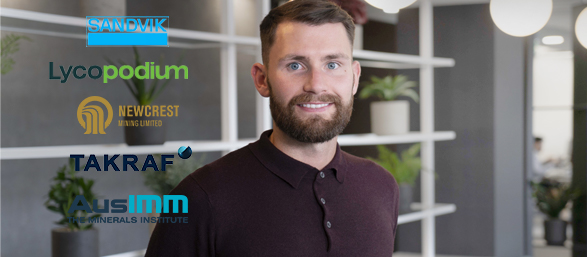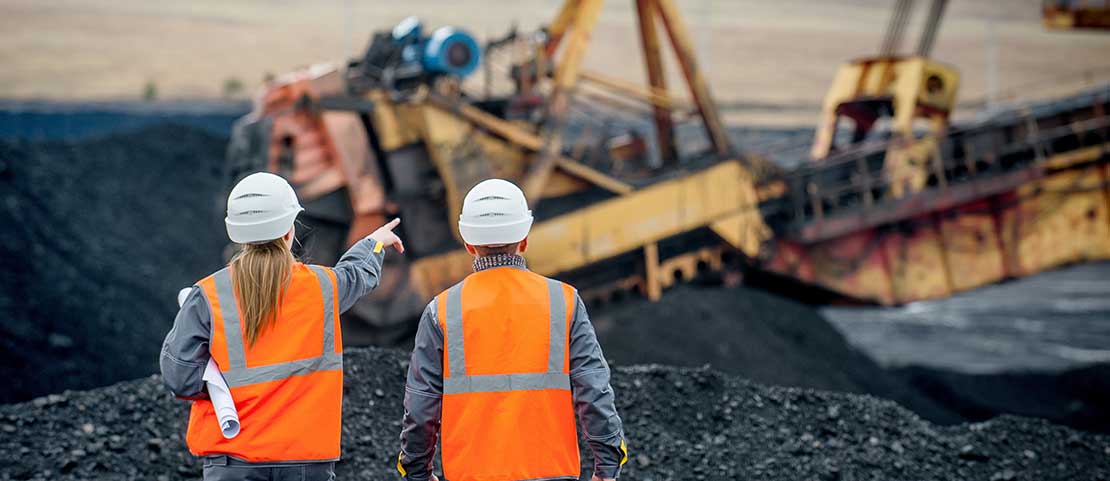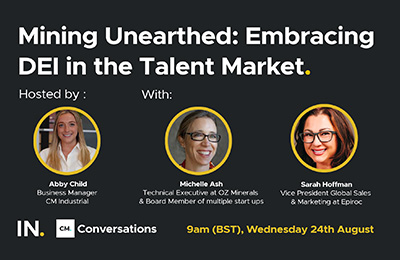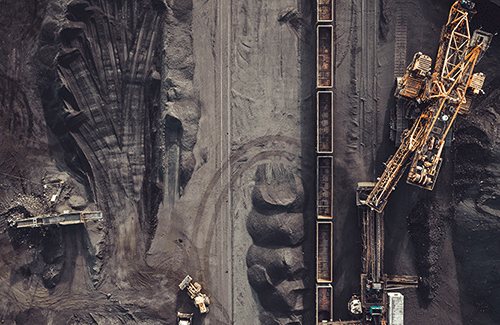

How 5 Industry Leaders are Tackling Diversity and Inclusion.
Diversity and inclusion are good for businesses. You can’t argue with that.
Diversity gives you access to a greater range of talent and helps provide insight into the needs and motivations of all your client or customer base, rather than just a small part of it.
Inclusion reinforces diversity. Companies with an inclusive culture will find that their staff are more engaged, more likely to stick around and generally more well-rounded and open-minded people too.
With both so clearly advantageous, it’s frustrating that many global industries lack diversity and don’t benefit from an inclusive working culture. This is true for the spaces that myself and my team recruit for such as materials handling, engineering and mining.
While attitudes have changed, our industries remain a product of the generations before us. So, as a recruiter, I wanted to know what companies in my markets are doing to become more diverse and inclusive.
I decided to catch-up with five industry leaders to ask their opinions on the topic:
- Giulia Savio, Diversity & Inclusion Consultant at AusIMM/former D&I Principal at Newcrest Mining
- Andrea Lovato, CEO at TAKRAF Group
- Nicole La Galia, General Manager of People at Lycopodium
- Charmaine de Jager, Senior HR Business Partner at Sandvik
- Matt Ross, the Former Head of Sales, Strategy and Marketing for Asia Pacific at BASF
What’s the Main Issue?
Diversity comes in many forms: ethnicity, religion, social class, disability, culture, age, sexual orientation. All topics were discussed during the conversations, but there was an overwhelmingly consistent issue identified within all organisations: gender imbalance.
According to Bloomberg, the proportion of women employed by mining companies sits at around 15.7%. These numbers are worse at management level. In 2019, just one in 20 global firms was headed by a woman.
Giulia Savio, Diversity & Inclusion Consultant at AusIMM, said that women can fall victim to unconscious bias in industries predominately led by men. I too feel that women can suffer from this, as well as people from different ethnicities and social backgrounds to the types of men we see in leadership roles.
It’s not a bad thing to like what you know and to identify with certain things, but when that is to the detriment of someone in the business or affects how you behave around certain people, this is when problems arise.
Addressing issues like unconscious bias and gender imbalance can be a daunting challenge for any business leader. Where do you start?
Starting to Think About Diversity & Inclusion
There’s not one single way to go about this task.
Having said that, it’s crucial to start your diversity and inclusion initiatives for the right reasons. Nicole La Galia, General Manager of People at Lycopodium, pointed out that diversity and inclusion isn’t a ‘box-ticking’ exercise. It needs to be taken seriously and start at board-level.
Matt Ross, the Former Head of Sales, Strategy and Marketing for Asia Pacific at BASF, agreed that the process must start at the top and be reinforced throughout the company by your leaders.
While Andrea Lovato, CEO at TAKRAF Group, also agreed that leaders play a crucial role in driving the agenda, he added that it’s important to give everyone a voice and an available platform to provide input and engage.
That’s the challenge of creating these diversity and inclusion initiatives. How do you engage everyone? This is especially challenging when your company lacks diversity and you don’t have the right experience to relate to professionals who find themselves in the minority.
That’s why, at the start, it’s sometimes better to simplify your initiatives. Charmaine de Jager, a Senior HR Business Partner, has certainly found this effective at Sandvik.
Just start the conversation. It doesn’t have to be a complex undertaking.
I agree that open, casual conversations are a much more inviting way of engaging staff with diversity and inclusion. However, these chats will only take you so far. That’s because they only become truly powerful when you hear the experiences of people that have fallen victim to a lack of diversity or inclusion. That’s when people start to understand the consequences.
Attracting a Diverse Workforce
However, recruiting people in these industries to build diversified teams is no walk in the park. Nicole at Lycopodium shared her frustrations about the difficulty of hiring women.
These industries historically lack diversity and when hiring, there is a limited pool to choose from. It’s almost impossible to achieve a 50/50 split, particularly from a gender perspective due to the industry’s overall demographic.
It is certainly true in the executive market I recruit in, that it can be challenging to find a diverse range of high-quality candidates. However, there are ways around this problem.
Giulia explained that in her experience, mining companies have seen success in attracting diverse candidates by including their diversity and inclusion campaigns and commitments in job adverts. I agree that this is a great way to stand out in an industry which lacks diversity.
Andrea from TAKRAF and I discussed the topic of an inclusive culture driving diversity, more specifically when it comes to receiving referrals and new applicants to the business:
We hope by creating an inclusive and engaging environment internally, this will not only make us a more attractive employer where people are happy within the organisation, but also help us appeal to applicants and even younger generations considering a career within our industry.
Should You Positively Discriminate?
When it’s time to build a shortlist, you can’t positively discriminate to ‘meet a quota’. Matt from BASF and Nicole from Lycopodium were keen to emphasise that the best person should still get the job.
Nicole even went as far to advise against promoting diverse shortlists at all.
We feel that by conducting a hiring process without bias and with a completely open mind is the best way to bring in the best person for the position. Yes, you can have an agenda to improve diversity and inclusion and culture across the business, but you can’t have an agenda when hiring for a certain role.
While I agree that the best person should always get the job, there are fair ways that you can promote diversity in the hiring process. For example, you can set quota to make sure that a certain number of ‘diverse’ candidates are interviewed for a role.
Matt told me that this approach has had some success at BASF.
If there wasn’t a qualified female candidate in the last round of interviews for a process, it would be paused whilst a review was conducted. We’d look at how the job description was written, how the role was advertised, how the first-round interviews were conducted and who was carrying them out. This has been a great success.
Creating an Inclusive Culture
Whilst I’d gained a lot of insight about different hiring strategies, next I wanted to find out how these companies provided an inclusive culture. Did these companies have environments that everyone could thrive in?
Charmaine de Jager explained how inclusion was at the heart of Sandvik’s diversity mission.
Our goal is to both create a work environment that provides all our employees with equal access to information, development and opportunity and to attract, develop and retain the best and brightest from all walks of life and backgrounds. This requires us to have a culture of inclusion where all individuals feel respected, are treated fairly, can achieve a healthy work-life balance and have the opportunity to excel in their chosen careers.
Each person I spoke to claimed they’re doing their best to create this type of culture. For them, a clear communication strategy was integral to achieving this - making sure that employees understood the value of diversity and inclusion.
However, Giulia from AusIMM/Newcrest stressed that striking the right balance is important.
It’s important to make sure your diversity and inclusion initiatives are pushed frequently enough, but not over the top. Otherwise, you risk losing impact and engagement.
As well as working on a communication strategy, I was interested to hear that numerous global mining companies and Lycopodium had engaged in unconscious bias and inclusive leadership training to uncover their limiting biases.
Being told that you have a bias to a certain social group, gender or ethnicity is not something that anyone likes to hear. And it can be uncomfortable when your beliefs are challenged. So, I asked Nicole what her approach to unconscious bias training and education was at Lycopodium.
You may experience some resistance from a number of people in the business and I don’t blame them. It can come across as trying to change them as people by their personality or behaviors. But it’s not about changing people. That’s why it’s important to communicate that it’s about helping people become the best version of themselves. It will help them unlock a new perspective, whilst identifying a whole new way of adding value. It can be truly enlightening for everyone.
Nicole hit the nail on the head. While it can be uncomfortable, this is an enlightening experience to help everyone become the best version of themselves.
Keep on Improving
These industrial still have a lot of work to do. However, having heard these five industry leaders, I feel we’re heading in the right direction. Attitudes are positive and companywide initiatives seem to be in place to promote diversity and inclusion.
Charmaine at Sandvik acknowledged that there is some great work is been done through organisations such as Women in Mining & Women in Tech but she also confirmed that the majority of job applicants are mostly male, so there is still some way to go. More women are entering STEM programmes, meaning that we’ll have a larger pool of female talent to hire from. And companies are valuing the advantages of a diverse workforce. As a recruiter, I will continue to promote this too.
This project has shown me that the vital topic of diversity & inclusion continues to build strong momentum and it fills me with great joy to see meaningful action happening, as opposed to listening to surface-level conversations. Let’s continue to search together to find a more diverse and inclusive future.
If you’re a professional in materials handling, mining or engineering and you’d like to share your opinions on this article, please email me at Jamie.Sheard@industrial-cm.com.
You can find more of my content via my consultant page.
Recommended.

Discussing Gender Diversity in the Mining Industry.
With the various challenges the mining industry faces, how can we champion gender diversity and what successes can inclusivity bring to your company? I hosted a live webinar to discuss just that. Click to read the key findings from our discussion.

Mining Unearthed: Embracing DEI in the Talent Market.
While mining companies have continued to raise awareness about the lack of diversity within the industry, actually addressing the issue remains a huge challenge. I invited some guests on to discuss how to overcome these within your company, and more.

Mining the Future, Technology First.
These mining tech trends give a vision of the future, with optimised environmental and economic solutions, lower risks, and much safer working conditions. Click here to read more about them.
.jpg)
Sustainable Mining Solutions? Get Your Head in the Cloud.
In this episode we speak with Sandeep Sandhu, General Manager of the Americas at RPM Global, about the power of digitisation to help traditional mining practices meet sustainable goals. Click to listen now.
Comments.